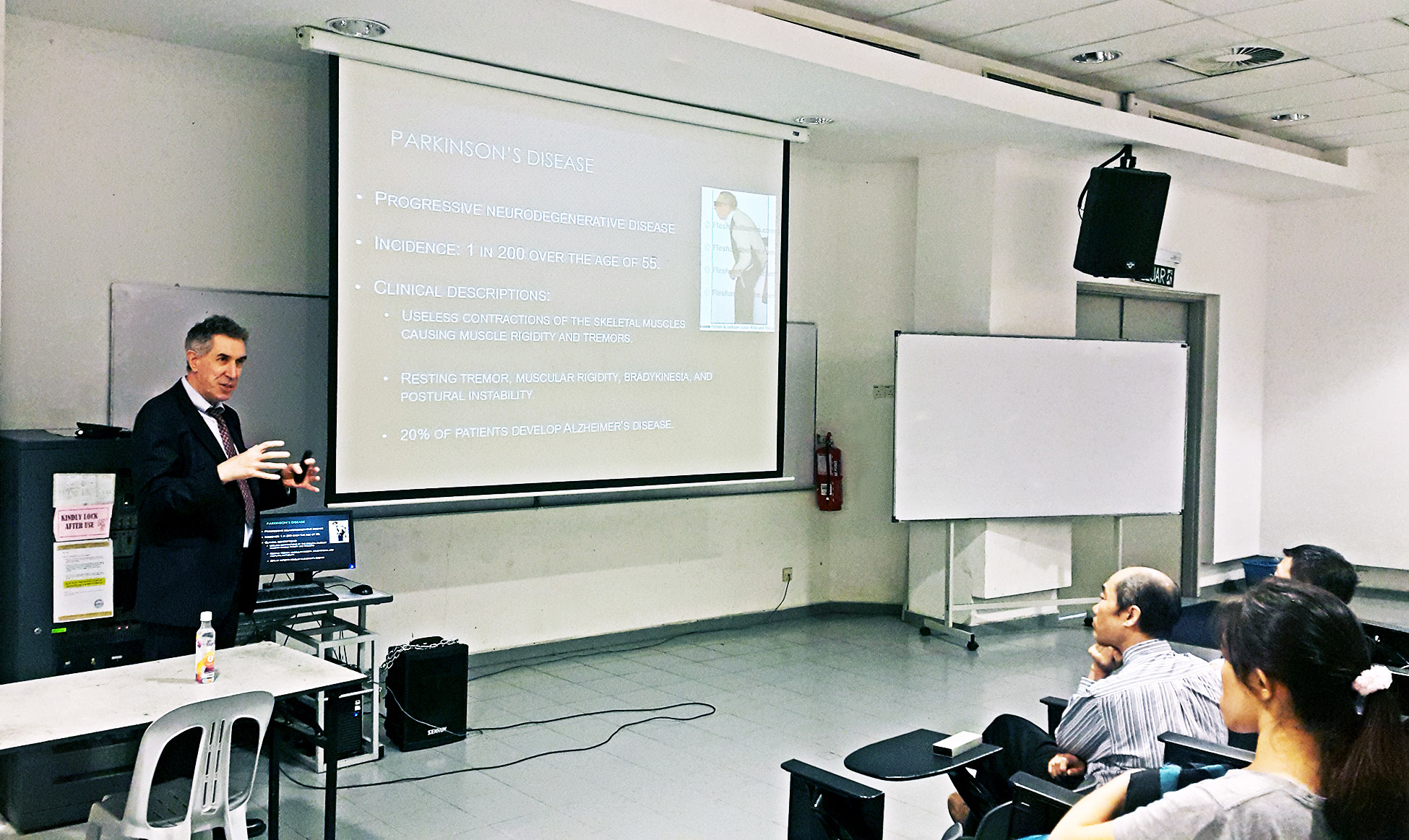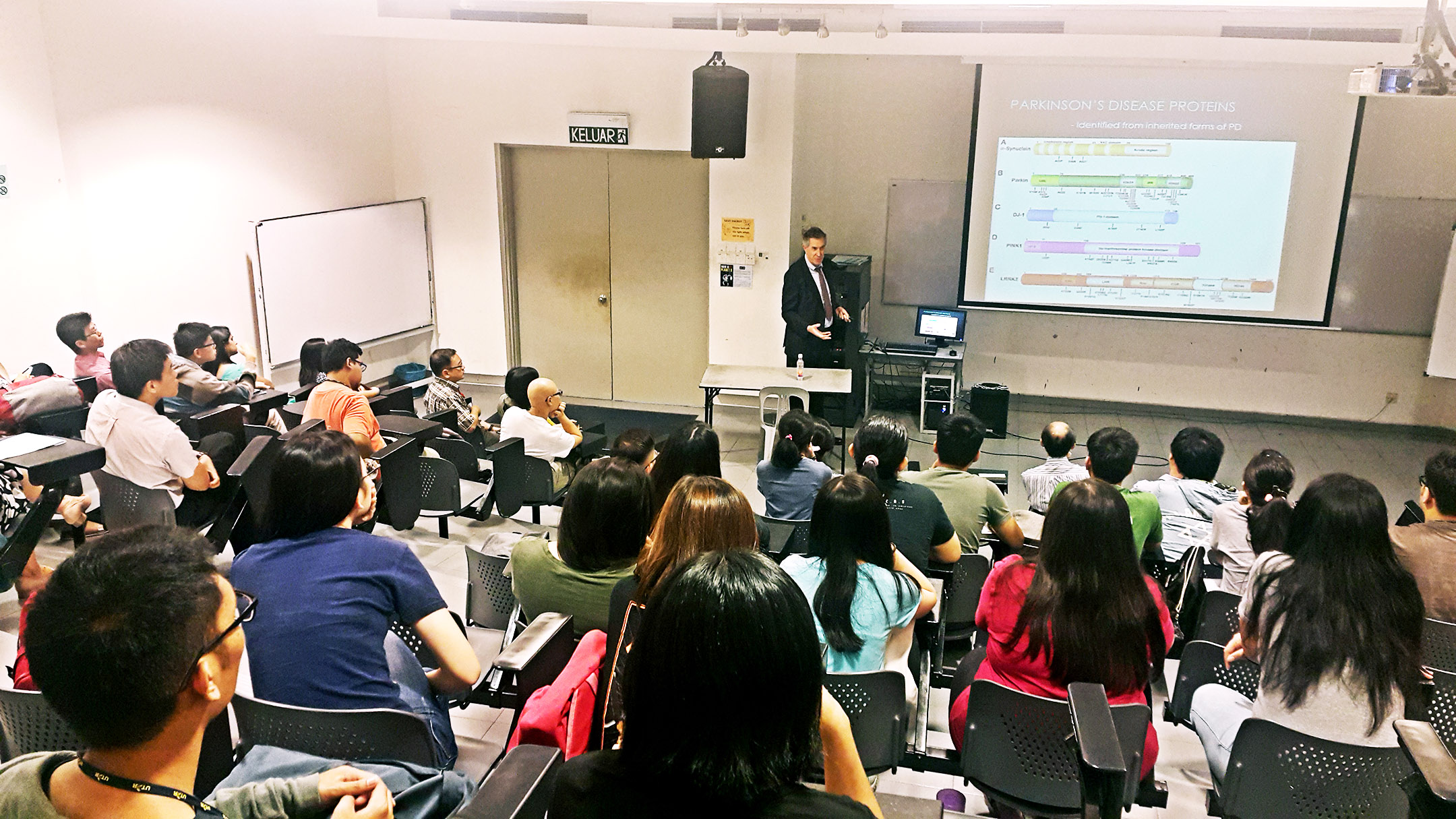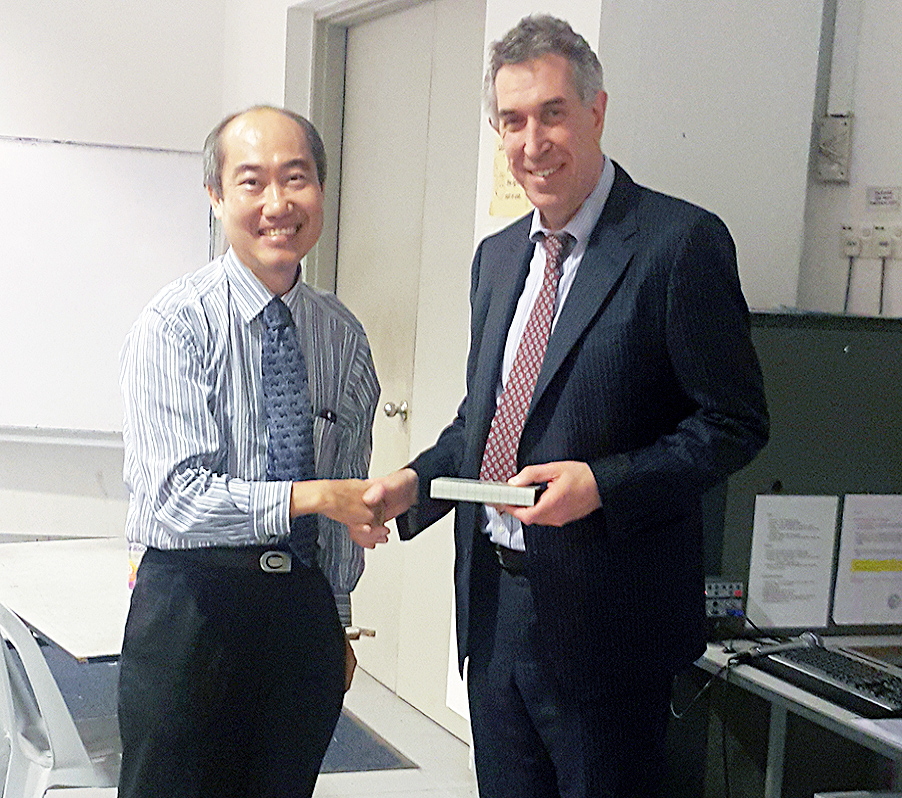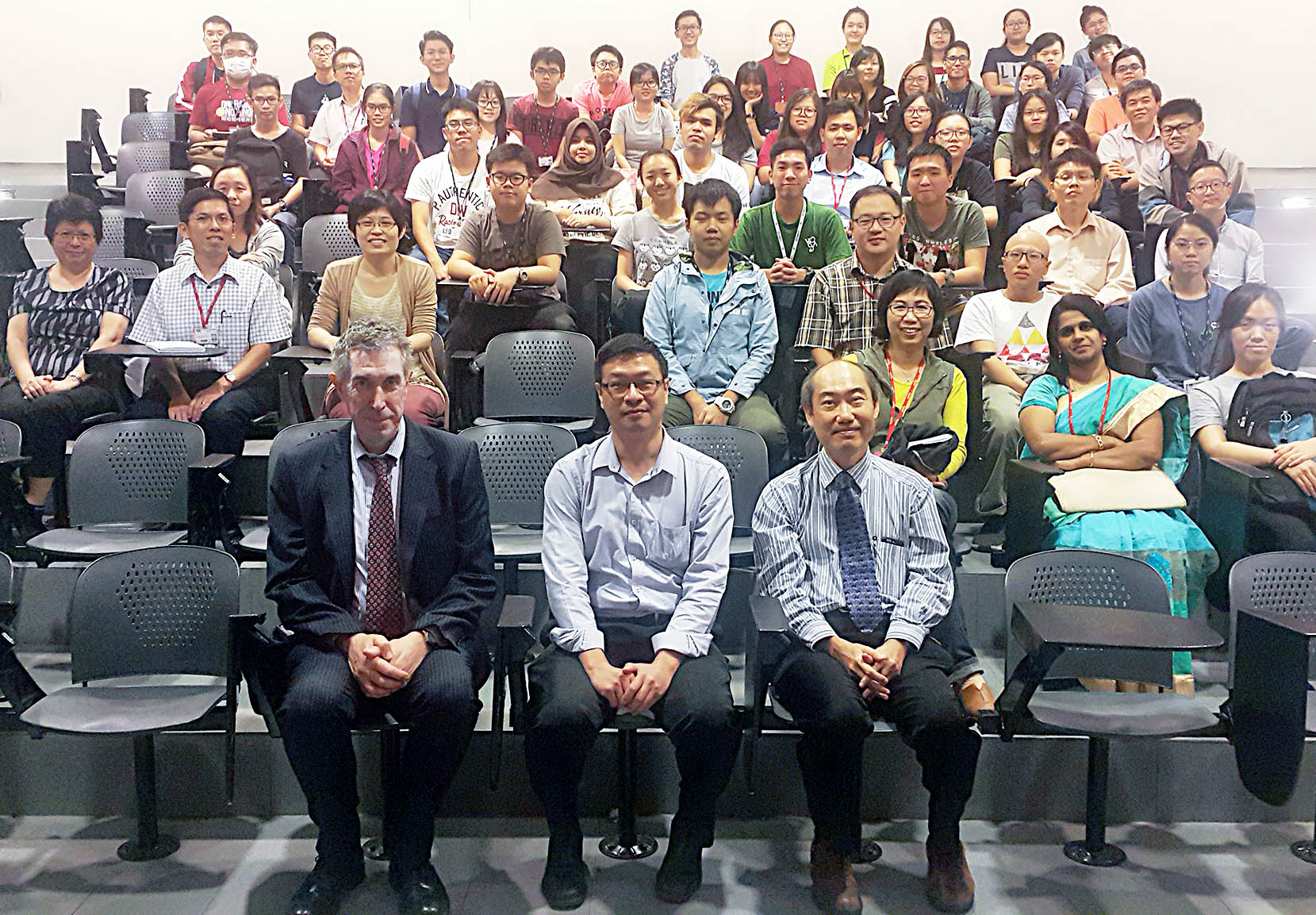
The Faculty of Science (FSc) organised a scientific talk titled “Alpha-synuclein: From function to dysfunction” on 11 July 2018 at Kampar Campus. Invited to deliver the talk was Prof Dr David Brown, a biochemistry professor at the University of Bath, United Kingdom. He is the external examiner of Biochemistry programme at FSc.
The talk aimed to provide a better understanding about the aggregation of alpha-, beta- synuclein, copper and iron, transcription factor Forkhead box O3a (FoxO3a), and ferrireductase activity and Fe(II) levels of Parkinson’s disease (PD) based on Prof Brown’s point of view.
Present at the talk were FSc Dean Assoc Prof Dr Lim Tuck Meng, FSc Deputy Dean for Student Development and Industrial Training Dr Sit Nam Weng, FSc Deputy Dean for R&D and Postgraduate Programmes Dr Phoon Lee Quen, Department of Chemical Science Head Assoc Prof Dr Sim Kooi Mow, lecturers Assoc Prof Dr Wong Fai Chu, Dr Lim Boon Hoe, Assoc Prof Dr Chai Tsun Thai, Assoc Prof Dr Tee Chong Siang, Assoc Prof Dr Teh Yok Lan, Dr Loh Pek Chin, Assoc Prof Dr Say Yee How, Teo Kah Cheng, Anto Cordelia Tanislaus Anthony Dhanapal, Ho Wai Yew, Goh Kai Wey, Tan Gaik Ling, other academic staff and students.
Prof David Brown began his talk by explaining the association of alpha synuclein (α-syn) with PD. Alpha synuclein oligomers are neurotoxic molecules in PD. The association between copper and α-syn in the formation of stellate toxic oligomers are highly toxic in the neurons. The overexpression of α-syn will increase the susceptibility to the toxicity of the oligomers, while the overexpression of β-syn will increase the resistance to toxic oligomers.
He also explained the association between α-syn and the transcription FoxO3a, “The elevation of α-syn will cause an increase in the expression of FoxO3a. The inhibition of FoxO3a activity by overexpression of DNA binding domain of FoxO3a will result in a significant protection against the α-syn oligomer toxicity.”
Prof David Brown has presented high-quality researches describing original and unpublished results of conceptual, constructive, empirical, experimental or theoretical work with his research team. PD is the second most common neurodegenerative and movement disorder disease. Parkinson’s patients will progressively lose control of their muscles, becoming stiffer, slower and imbalance. Soon, they will have difficulties to walk, talk or even completing simple tasks. Furthermore, 20% of Parkinson’s patients will develop Alzheimer’s disease. The number of individuals with PD will increase in the future. Currently, there are no ways to predict or prevent sporadic PD. Therefore, it is important to develop a biomarker that can be used to detect the people at risk of PD. It can be done with a simple chemical test which is the association between FoxO3a, ferrireductase activity and Fe(II) levels. The elevation of FoxO3a is caused by increased ferrireductase activity and Fe(II) levels. These results suggest that α-syn increases FoxO3a expression because of its intrinsic ferrireductase activity. Moreover, this novel study also showed that FoxO3a plays a pivotal role in the toxicity of both Fe(II) and toxic α-syn species to neuronal cells.
Other than that, Prof David Brown’s most notable research relates to the metal binding of the protein central to these diseases, the prion protein, and its possible cellular role as an antioxidant. He is also the author of several textbooks and some research papers on prion diseases and has served on the boards.
Prof David Brown hoped this scientific talk could assist the participants in research areas related to Parkinson’s disease and help the students with their studies as well. He also hoped the talk will give the students and staff new insights on the most recent innovations, trends, concerns, challenges as well as solutions adopted not only for human disease but also in other related fields.
The talk ended with Q&A and group photograph.

Prof Brown elaborating the Parkinson disease

The participants listening to the talk attentively

Dr Lim (left) presenting a token of appreciation to Prof Brown

Front row, from left: Prof Brown, Dr Sim and Dr Lim with the participants
© 2019 UNIVERSITI TUNKU ABDUL RAHMAN DU012(A).
Wholly owned by UTAR Education Foundation Co. No. 578227-M LEGAL STATEMENT TERM OF USAGE PRIVACY NOTICE